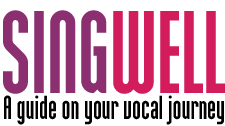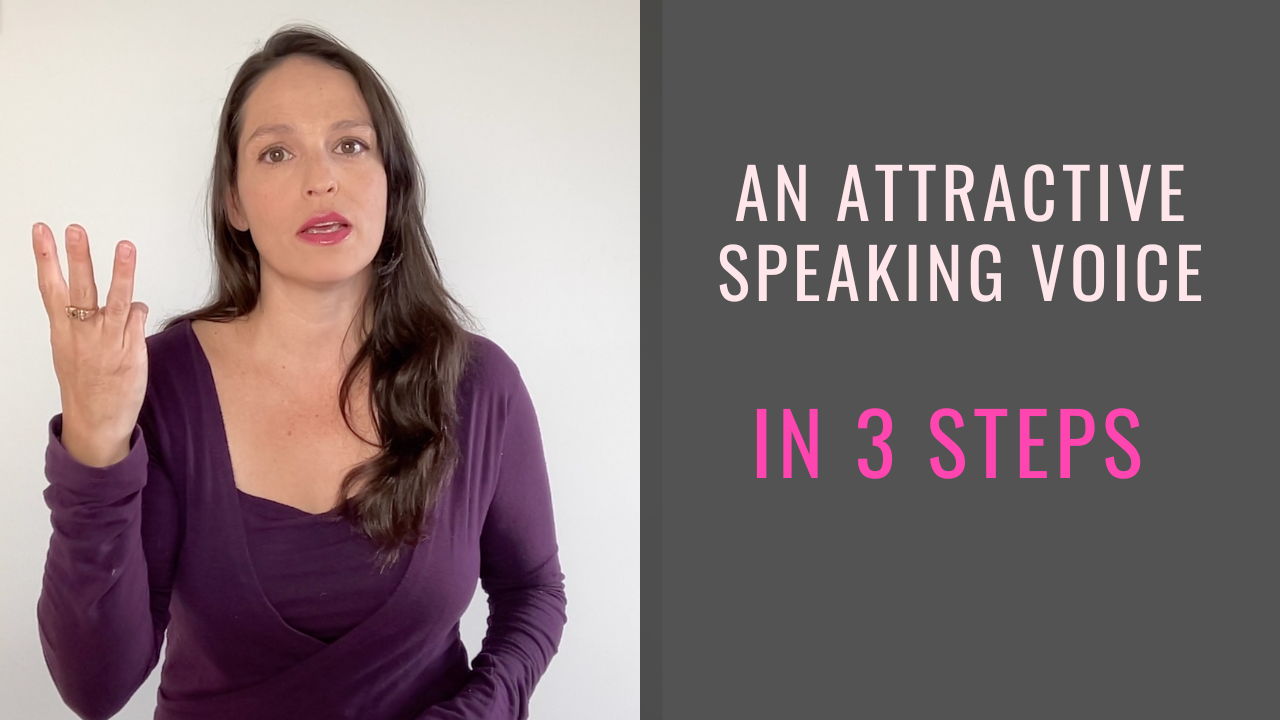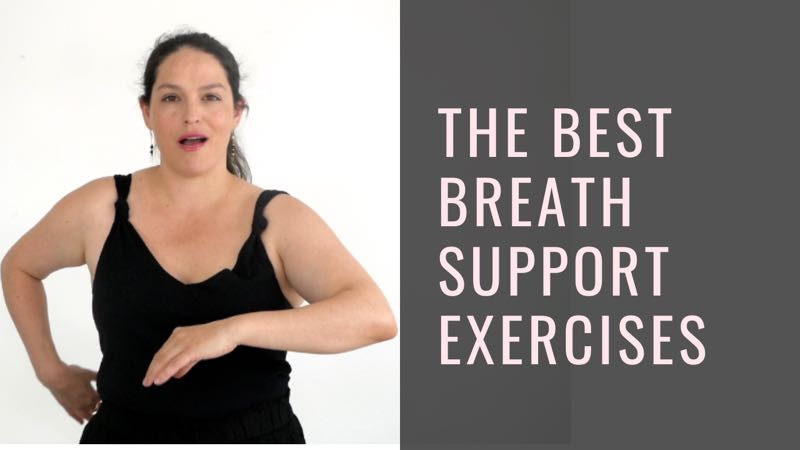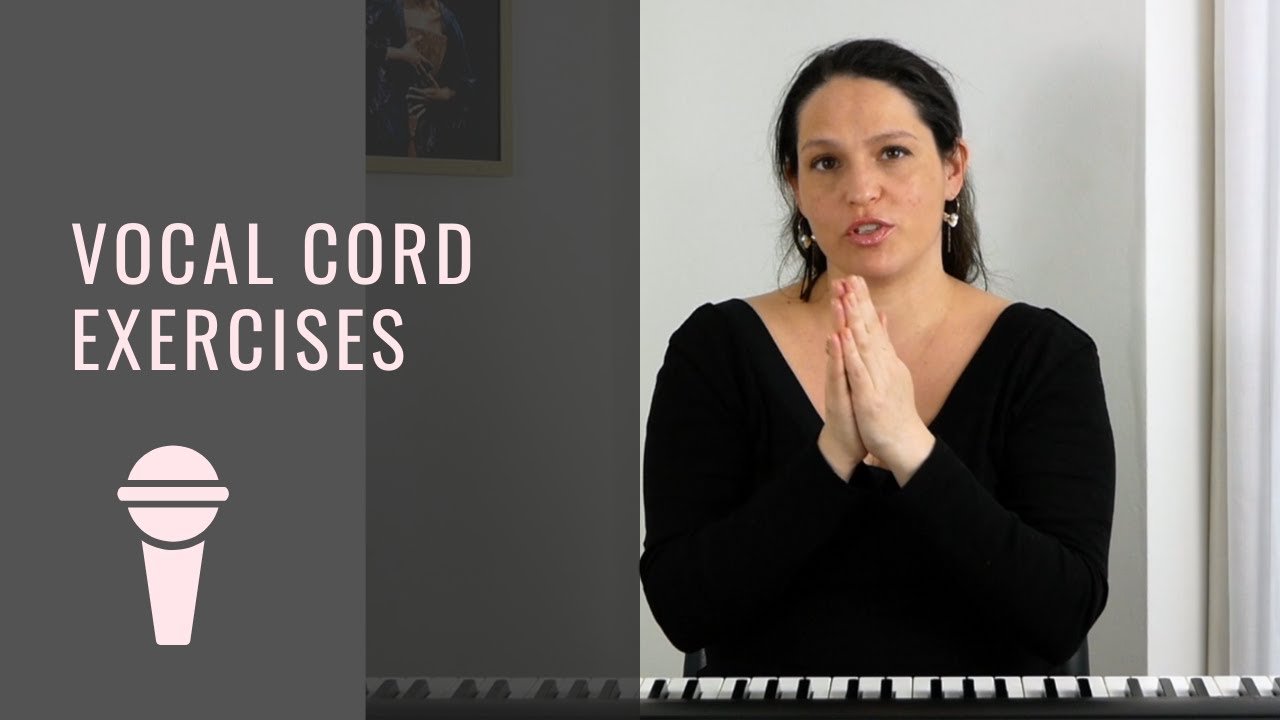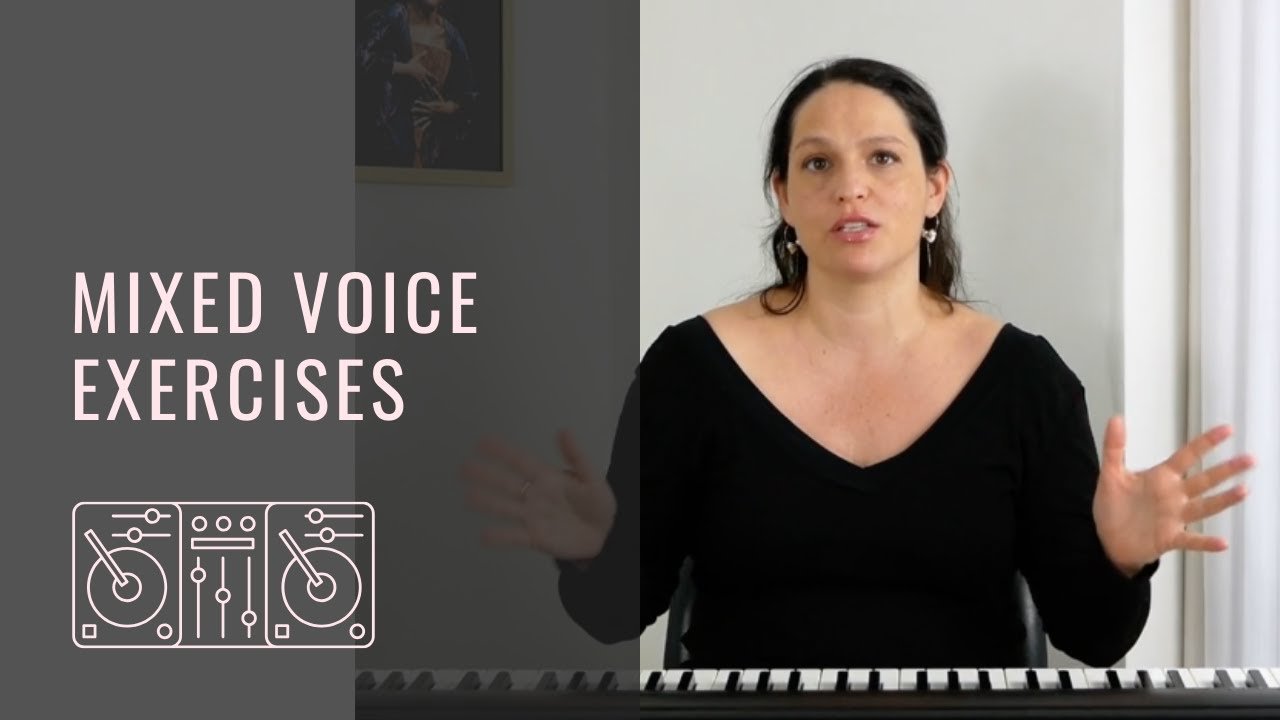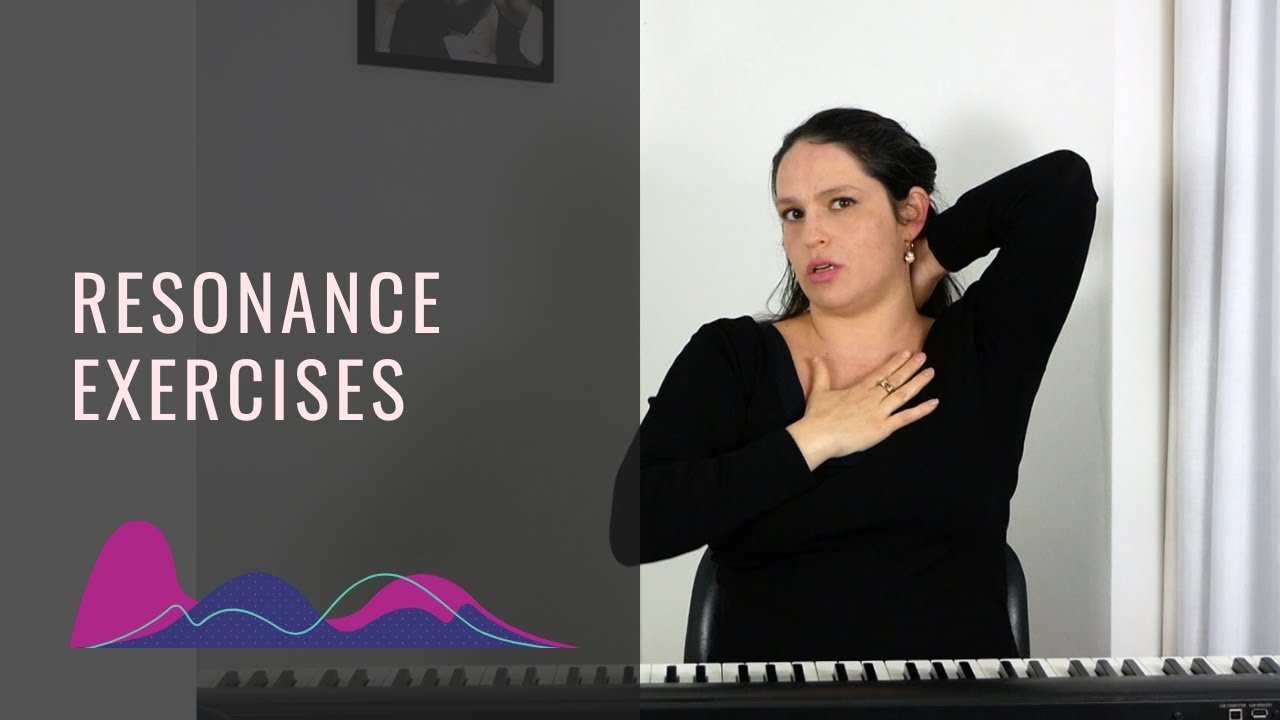How to warm up your voice for singing? When you start a singing practice session, don't just start singing! Like any athlete would tell you, do some warm-up.
What does that mean? Get your body ready for singing by starting out with minimal and vocally healthy exercises. Don't skip this step.
Warm-up exercises must feel comfortable
Never sing the entire exercise going through the entire range (unless your name is Dimash). Any warm-up or vocal tutorial you will find will probably cover the whole human range. But any given human is likely to have only a part of that range. So the rule is: sing only when you are comfortable. Stop when you are no longer comfortable.
If you are not sure how to sing without straining as you move to the higher notes, look up how to sing without straining on this website. But I do show you here how to do the exercises safely, so make sure o follow my lead!
The order of my vocal warm-up
With the above warm-up exercises, it's best to stand. but if you must sit, have both feet on the floor and sit up straight. Make sure you're not tense. If you sit, the torso should be straight but relaxed.
What is a good vocal warm-up
- Starting point of a comfortable part of your vocal range
- Short range exercise as openers (over a third of a fifth maximum), then gradually expanding to more wide range exercises.
- Use of vocal consonants (such as lip trills, rolled R, NG or Z) first, then moving on to closed vowels (like the latin vowels u or i) and then moving on to open vowel (like the latin vowels a, o and e)
Ideally, the warm-up has bonuses to optimize the results:
- Moving from a comfortable place in the voice down, then back to the middle and going up, then, if you like, come back down.
- Have some kind of body work before making a sound (I have a bodywork section in the basic warm-up in the video above).
First bodywork
- Hold elbows with opposite hands, bring arms above head, arms aligned with torso, the ears between the arms.
- Move head and neck around freely, relax the neck. This exercise is to relax that area
- Relax arms back down, roll shoulders, either together or one after the other.
- Arms back up. Inhale, then exhale as you stretch to the side. Stay for a moment, feeling the stretch, and inhale. Then straighten up while exhaling. Repeat this, but tipping your upper body to the right. Finally, when straight again, do one more inhale, then on exhale, relax arms, roll shoulders sideways, then to the front and back, again either together or singly.
- Breathe in. Let shoulders and chest come up. Hold breath, then relax shoulders and chest muscles back down. Then exhale. Then repeat, but this time let the jaw relax with the shoulders at the same time. Finally exhale. The idea is to get used to having shoulders, neck and jaw relaxed while you have plenty of air in the lungs.
- Inhale, then again release jaw and shoulders while holding breath, then exhale on a "sss". Hiss for as long as you can. This builds stamina and support.
Then: humming / singing exercises
For all sung exercises, ladies start on middle C (C4), gentlemen, one octave lower. These notes are referred to as simply "C" below.
- Lip trills (or rolled "r", or plosive consonant like a "v"). Three times on same note with short silence in between each. Expand ribs on each trill. Repeat, going down by semitone, continuing for as long as comfortable. Then do the same (starting on C) but going up for as long as comfortable. Pay attention to keeping ribs expanding to the sides throughout. Use hand movements if it helps.
- Next, sing "ng" as in 'tongue'. Pattern: 1-2-3-2-1 (where 1 is the lower note, 3 the higher). Put hand on chest. As you sing, feel like you are sighing. Same sequences as before (going down, then up, starting on C). Pay attention to relaxing jaw, neck and shoulders throughout.
- Now "woo" sound. Relax jaw with each and every "woo". Pattern: 5-3-1. Go down from C.
- Same, but "woe" (as in "woe is me!"), and going up from C.
- Next: "see". Say it first, in a lilting way: see-ee-ee-ee-ee-ee-ee. Pattern 1-2-3-4-5-4-3-2-1. Go down from C, then up from C.
- This one is good for high notes. "nyah", a nasal sound. Pattern 1-3-5-3-1. Down from C, for as long as comfortable, then up for as long as comfortable.
- Same exercise (with "nyah"), but with pattern 1-3-5-8-5-3-1. This time, go up first.
Tip
As you go up and down on the melody with these exercises, don't think about going up or down- even if the melody is! Think about going to the sides. Hold an imaginary rubber band and stretch it to the sides.
The warm-up is a fundamental part of your singing practice. But don’t forget - it’s only one part. I recommend a 4 part practice structure:
Bodywork -> warm up -> vocal technique -> sing-through.
After you have given this warm-up a try for a few practice sessions, tell me what you think in the comments. And don’t hesitate to ask me any questions you have. I answer all questions here personally.
Bonus warm-up exercises
Exercise 1. Lip trills/rolled r's: short range
0:25 in the above video. If trilling your lips is difficult for you, go on rolled R, or a vocal consonant like v or z. If you do a z, I recommend that you perk your lips, as it helps open up the spaces inside. As this is a warm-up, we do the exercise on a very short range: 1-2-3-2-1. You're not expected to go all the way to the low and high notes that I do in the video. This warm up is for all voice types, so you should sing until you're not comfortable anymore.
Exercise 2. Slides: 1-5-1
3:22 in the above video. Again we'll go on lip trills, but this time we will slide from low to high and back. Don't jump from one note to the other, but make a siren noise instead. I recommend going over this exercise a couple of times and also try it with NG: a nice sound to make siren noises on.
Exercise 3. Woo woo woo
6:38 in the above video. We're just going woo woo woo woo woo on a short range: 1-2-3-2-1. While the W helps to get a momentum so that the start of the sound is nice and smooth: it prevents 'big beginnings' or attacks on the vocal cords. When you do the woo woo woo: look in the mirror and make sure your jaw drops on every single woo.
As we go up, I want to change the exercise a bit and go on woaw and extend the range: 1-2-3-4-5-4-3-2-1.
Exercise 4. Closing the vocal cords: u-oh and ngya
10:30 in the above video. The uh-oh exercise is here to help us close our vocal cords. To do it properly think minimal effort. Don't go big. First say the uh-oh and then do an exercise with it. When it's time to sing don't start "singing", don't think of making a singing sound. Instead, just say uh-oh on a certain pitch. Don't try to make it pretty. Another way to close your vocal cords AND have some twang in your voice (twang is a bright, almost squeaky quality which all good singers use), is by saying ngya. As you go up, make sure you don't make the first ng too long, or this will stop your airflow and add pressure.
Exercise 5. Sing on Five Italian vowels A/E/I/O/U
15:08 in the above video. First say the 5 vowels legato (connected, without breaks). Then do that on the notes. When we go higher, we'll change the vowel order to I/E/A/O/U. the melody changes, too, check the video!
I'm warmed up to sing for real! What's next?
Well, NOW you are ready to really improve your technique. Check out the related article that sums up all vocal exercises, all about a separate function of your voice: chest voice, head voice, mixed voice, you name it.
speaking about vocal exercises...
What you get on this page is a toolbox. Having a toolbox is one thing, becoming a carpenter another. For systematic and lasting improvement you need a system and guidance. So...
Vocal warm-up exercises for beginners
Especially for beginning singers, warm-up exercises are crucial. All the above exercises are suitable for beginners. But a few distinctions can be made.
Bodywork exercises are absolutely critical for beginning singers.
Also, beginners benefit a lot from:
- The short range exercises: just three notes in range. And I like to have them do that on a word. Like ‘you, you you’.
- The ‘ng’ humming. Again, use a three note range.
- The 'ng' slides. Singing out of tune singers: stretching the vocal cords with ng sliding or ‘siren noises’.
Why do beginning singers benefit from these exercises? Because the most common problems that beginning singers have are muscle tension in the jaw/neck/shoulders, using too much air. The bodywork and above exercises deal with these issues.
After one or two months into training, beginning singers can move on to vocal cord exercises. These are the most basic of all vocal exercises after the warm-up. Only if someone is more advanced, I would give them more exercises: range, power, resonance. Those would be the next step. Beginners won't right away go there.

"
My history with vocal warm-up exercises
I have always loved playing around with vocal exercises. I would make them up, change the melody and sounds, and enjoy composing sequences of exercises and build up a warm-up which leaves the singer feeling prepared to sing.
It was even my informal, unpaid job while singing in the Jerusalem Academy Chamber Choir. We were all singers in professional classical training. We would start every rehearsal with a warm-up and one of the singers would conduct it. This so called 'warm-uper' would tell the group what the exercise is, and we’d all sing it and start moving up and down the range together.
After a while people stopped volunteering to lead the charge because they took pity on me, seeing how much I wanted to do it. Or maybe they liked my approach! I would usually improvise the exercises and sequences on the spot. It was good times.
Nowadays, after about 18 years of teaching, I have accumulated many exercises and different ways to achieve things with the voice. Anything you want, I have an exercise for that.
Are warm-up exercises really necessary?
Hmmm... you got me, they're not, it's all a scam. Like that button you push while waiting for the red light to change into green. Okay, now kidding aside, the warm-up exercises are indeed critical for anytime you want to sing. The other exercises are necessary only if you want to sing better! Do you?
No muscle in our body should carry out heavy lifting or even medium difficulty level work without doing something lighter work first. That's why all athletes and dancers do warm-up exercises with their whole bodies before doing the actual dancing or sports.
Your vocal instrument is almost your entire body, and some would argue (myself included) that you should learn to use your entire body properly in order to sing well. Most importantly, your vocal cords are muscles. So they, too, need the lighter lifting before doing the heavy lifting. As in: warm up before singing a song.
There is a loophole, though...
I have done this before, and instructed students to do that. When you have absolutely no patience to do a whole warm up session. You just want to sing the song and have some fun - dammit! Here's what I do: I use a vocal consonant, such as a lip-trill, a rolled R or NG and I sing a phrase or two from the song on that. It's not ideal, because your song might be wide ranged, and that's not a gradual enough beginning. But it's better than bursting into singing fully when your voice is not ready. Do that for a couple of minutes, before moving on to "normal singing". And don't tell I taught you how to cheat!
Take your desire to sing seriously: get tools to become a better singer in your inbox
Eye-openers, tips and stories. Also content that I don't publish on my website.
